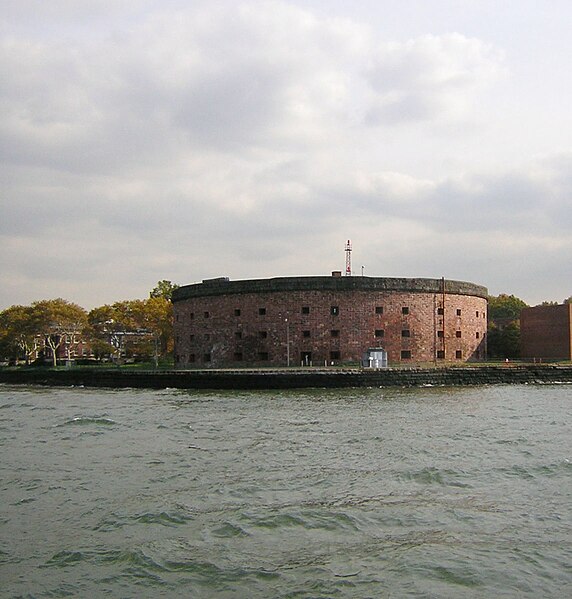A caponier is a type of defensive structure in a fortification. Fire from this point could cover the ditch beyond the curtain wall to deter any attempt to storm the wall. The word originates from the French caponnière, meaning "chicken coop".
Rifle port inside a caponier, Fort Napoleon, Ostend, Belgium.
A caponier covered with a layer of earth, Sacavém Fort, Portugal.
Interior of caponier at Fort de Bois l'Abbé
Caponier, Fort Napoleon, Ostend, Belgium
A polygonal fort is a type of fortification originating in France in the late 18th century and fully developed in Germany in the first half of the 19th century. Unlike earlier forts, polygonal forts had no bastions, which had proved to be vulnerable. As part of ring fortresses, polygonal forts were generally arranged in a ring around the place they were intended to protect, so that each fort could support its neighbours. The concept of the polygonal fort proved to be adaptable to improvements in the artillery which might be used against them, and they continued to be built and rebuilt well into the 20th century.
An 1868 plan of Fort I of the ring fortress at Magdeburg, typical of mid-19th century polygonal forts
Fort de Querqueville, one of the casemated coastal forts at Cherbourg, which was based on Montalembert's system
Castle Williams in New York Harbor, constructed from 1807 according to Montalembert's system
Fort I of the Cologne ring fortress at Neustadt-Süd, showing the gate in the gorge wall, protected by the reduit on the left








